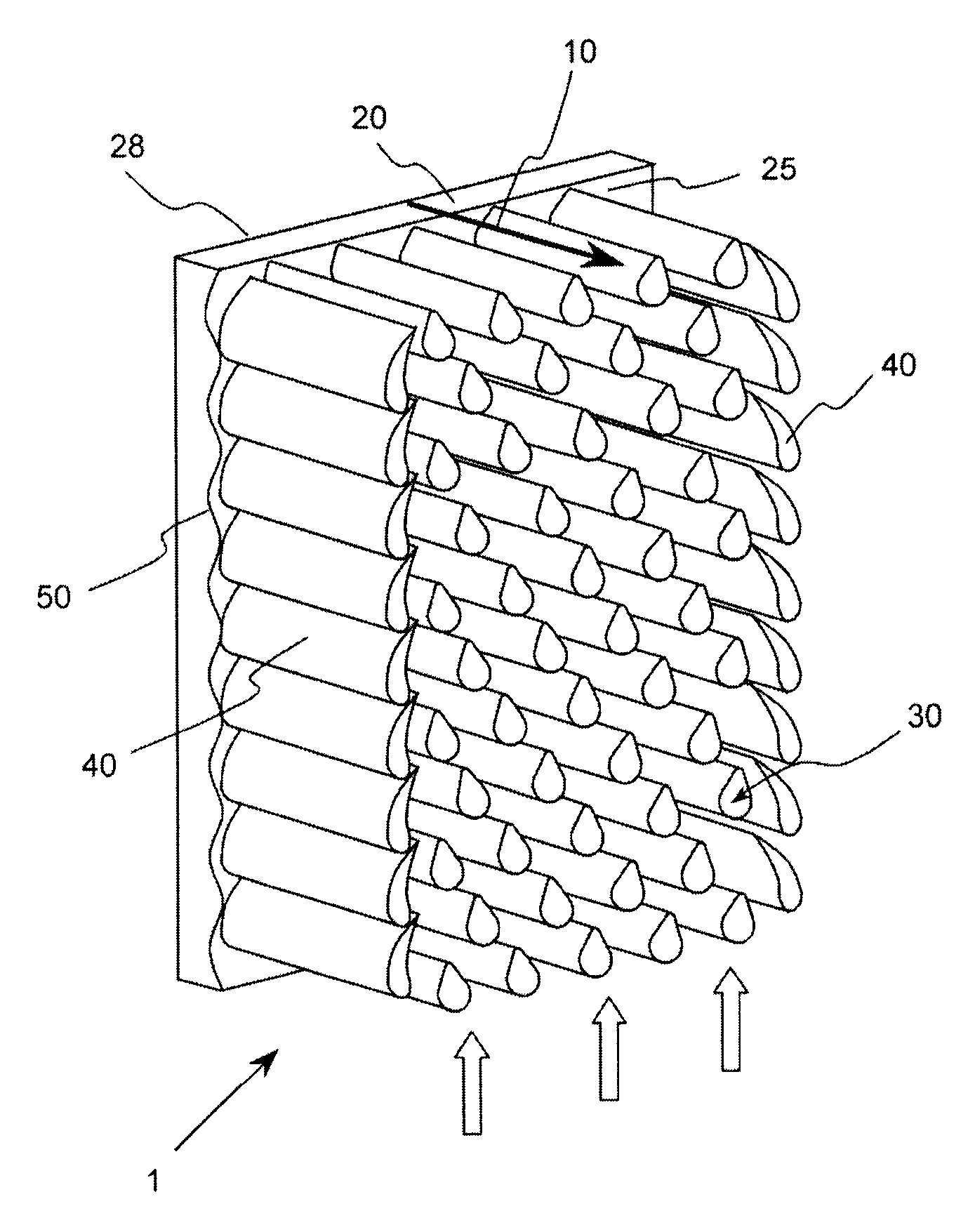Heat sink
a heat sink and heat sink technology, applied in the direction of electrical equipment construction details, lighting and heating equipment, laminated elements, etc., can solve the problems of relative low heat transfer rate, affecting the entire electronic system, and reducing the efficiency of heat dissipation in a limited space to maintain the performance of electronic devices, so as to achieve the effect of minimizing pressure drop and improving heat dissipation
- Summary
- Abstract
- Description
- Claims
- Application Information
AI Technical Summary
Benefits of technology
Problems solved by technology
Method used
Image
Examples
Embodiment Construction
[0034]In the following a detailed description of preferred embodiments of the present invention will be given.
[0035]The prior art heat sinks disclosed in FIGS. 1 and 2 have been discussed in the background section and will not be further discussed herein.
[0036]According to the geometric relationship of the base normal line and the cooling flow direction, two types of heat sinks can be identified: 1) When the cooling flow direction parallel to the base normal line, the heat transfer mode is mainly natural convection. This type of heat sinks is usually orientated horizontally. 2) When the flow direction is perpendicular to the normal line of the heat sink base, either natural convection or forced convection can be applied to the heat sink. This type of heat sinks is usually oriented vertically. The present invention is primarily applied to the second case, i.e., the flow direction is perpendicular to the normal line of the heat sink base.
[0037]FIG. 3 presents a heat sink according to ...
PUM
 Login to View More
Login to View More Abstract
Description
Claims
Application Information
 Login to View More
Login to View More - R&D
- Intellectual Property
- Life Sciences
- Materials
- Tech Scout
- Unparalleled Data Quality
- Higher Quality Content
- 60% Fewer Hallucinations
Browse by: Latest US Patents, China's latest patents, Technical Efficacy Thesaurus, Application Domain, Technology Topic, Popular Technical Reports.
© 2025 PatSnap. All rights reserved.Legal|Privacy policy|Modern Slavery Act Transparency Statement|Sitemap|About US| Contact US: help@patsnap.com



